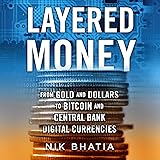Imagine holding $1,000, eager to dive into the exciting world of cryptocurrency. You want significant gains, but you also want to manage risk. Many new investors face this exact dilemma. It feels overwhelming to navigate the thousands of digital assets available. How do you find those promising altcoins without making overly risky bets? This article, inspired by the video above, explores a strategic approach for investing that exact amount. We will look beyond Bitcoin to find potential growth opportunities.
The cryptocurrency market offers diverse investment strategies. You can day trade, swing trade, or simply hold for long periods (HODL). For new investors, understanding market cycles is key. This particular strategy focuses on cycle trading. You buy coins with good potential during lower market periods. Then, you plan to sell them closer to the cycle’s peak. This approach aims for safer, sustained growth rather than quick, volatile wins. It seeks coins with a bit less risk than many others in the market.
Every investment carries some risk. Generally, coins with smaller market capitalizations have higher risk. They can offer larger returns but also greater losses. The goal here is to identify stronger altcoins. These coins have solid fundamentals and communities. They offer a balance of potential growth and relative stability. Let’s explore how a $1,000 portfolio could be structured for these goals. Remember, this information is for educational purposes only. It is not financial advice.
Strategic Altcoin Investments: Beyond Bitcoin’s Dominance
When building a crypto portfolio, diversification is important. While Bitcoin often dominates discussions, many other projects show great promise. These altcoins serve different purposes and solve different problems. They can contribute significantly to a balanced portfolio. A well-considered selection can capitalize on market narratives. It also spreads risk across various segments of the crypto ecosystem. We aim to identify coins with strong utility and community support.
The first significant allocation in this strategy is towards Ethereum. Ethereum receives $400 out of the $1,000 total. It stands as the second-largest cryptocurrency by market cap. Ethereum is not just a digital currency; it is a global, decentralized computing platform. Its blockchain powers countless applications and innovations. Developers and investors widely embrace its ecosystem. This strong sentiment drives its continued growth.
Ethereum’s utility extends far beyond simple transactions. Its network supports smart contracts. These are self-executing contracts with agreement terms directly written into code. Decentralized applications (dApps) thrive on Ethereum. The entire DeFi (Decentralized Finance) movement largely originates from Ethereum. Many initial coin offerings (ICOs) built on its robust framework. This real-world usage gives Ethereum substantial value. Its all-time high has exceeded $1,000 in the past. This history suggests strong recovery potential.
Today, the narrative around Ethereum remains powerful. It continues to lead the DeFi sector. Billions of dollars are locked in Ethereum-based DeFi protocols. This massive ecosystem demonstrates real adoption. Ongoing development, including the transition to Ethereum 2.0 (now known as “The Merge” and subsequent upgrades), aims to improve scalability and efficiency. While these upgrades bring some uncertainty, they also offer immense upside. The widespread building and usage make Ethereum a compelling investment.
Exploring Promising Altcoins: Litecoin, Cardano, Chainlink, and Monero
After Ethereum, the next picks focus on other strong altcoins. Each offers unique potential within the crypto market. Allocating $100 to Litecoin is a part of this plan. Litecoin is often called “digital silver.” It was created to be a faster, lighter version of Bitcoin. Its transaction times are quicker. Fees are also typically lower than Bitcoin’s. Historically, Litecoin has performed as an “oscillator.” This means it tends to follow Bitcoin’s market cycles. It often pumps significantly when Bitcoin does.
Litecoin has shown resilience through multiple market cycles. It has consistently increased in value when Bitcoin has rallied. This historical pattern suggests a reliable cycle trade opportunity. Recently, Litecoin broke some major resistance levels. This technical signal indicates potential for further upward movement. Considering its track record, reaching well above $60 again during a bull run seems plausible. Many investors appreciate its established presence and consistent behavior.
Next, $100 goes into Cardano (ADA). Cardano is a blockchain platform built on peer-reviewed research. It aims to provide a more secure and sustainable infrastructure for dApps. The project boasts a highly engaged and growing community. This strong community support is a significant asset. Cardano has a robust development roadmap. It constantly introduces new features and capabilities. This ongoing innovation keeps it in the news.
Investing in Cardano allows for staking. Staking means holding your coins to support the network. In return, you earn rewards. This provides a passive income stream. If the market recognizes Cardano’s value this cycle, the $100 investment could grow considerably. Its scientific approach to blockchain development appeals to many. This focus on rigorous research contributes to its long-term potential.
Chainlink (LINK) receives another $100 allocation. Chainlink operates as a decentralized oracle network. Oracles connect real-world data to blockchain-based smart contracts. This utility is crucial for many decentralized applications. Without Chainlink, smart contracts cannot securely interact with external data. Its indispensable role makes it a core piece of the crypto infrastructure. The project has developed a large and dedicated community of investors. This community supports its continued growth.
Despite its significant growth, Chainlink continues to show strength. It maintains strong support levels. This indicates sustained demand from investors. A major risk with Chainlink, however, is supply concentration. Over 50% of the LINK supply is controlled by founders and large institutional holders (“whales”). While this can be a risk, their continued belief in the project also signals confidence. Its foundational role in DeFi means it could continue to see remarkable growth, even after previous surges.
Finally, $100 is allocated to Monero (XMR). Monero is widely regarded as the leading privacy coin. It offers untraceable and anonymous transactions. This feature contrasts sharply with Bitcoin, where transactions are public. For those prioritizing financial privacy, Monero stands out. It uses advanced cryptographic techniques to obscure transaction details. This makes it impossible to link transactions to specific users.
Monero’s core utility is its enhanced privacy features. Bitcoin can never achieve the same level of anonymity. Another key factor for Monero is its limited supply. Unlike some other cryptocurrencies, Monero does not have an infinitely growing supply. This scarcity can contribute to price appreciation. As demand for privacy in digital transactions grows, Monero could see significant gains. Its unique value proposition makes it a strategic choice for diversification.
Higher Risk, Higher Reward: Diversifying into DeFi Projects
The remaining $200 of the $1,000 portfolio is dedicated to DeFi projects. This category carries a higher level of risk. However, it also offers the potential for substantial gains. Decentralized Finance (DeFi) aims to recreate traditional financial services on the blockchain. This removes intermediaries like banks. DeFi includes lending, borrowing, and trading platforms. Many experimental DeFi projects emerged, some seeing huge spikes then crashing quickly. This portfolio focuses on established DeFi projects. They have a proven track record. They offer more stability than truly experimental tokens.
The $200 is spread across four projects, with $50 allocated to each. This approach diversifies within the higher-risk DeFi sector. Maker (MKR) is the first choice. Maker allows users to create Dai, a stablecoin pegged to the US dollar. It is a fundamental piece of the DeFi ecosystem. Its stability mechanism is crucial for many other projects. Compound (COMP) is another pick. Compound is a leading decentralized lending and borrowing protocol. Users can earn interest on their crypto assets. They can also borrow against them. This provides essential financial services.
Yearn Finance (YFI) receives $50. Yearn Finance is a decentralized yield aggregator. It automatically optimizes users’ crypto earnings. It moves funds between different lending protocols to find the best returns. This innovative service simplifies yield farming. Ren (REN) completes the DeFi selection. Ren enables cross-chain liquidity. It allows users to move assets between different blockchains. This enhances interoperability within the crypto space. These four projects represent strong, utility-driven components of DeFi. They offer significant upside potential. They still carry more risk than established assets like Ethereum. But they are less volatile than newer, unproven experiments.
Investing in these DeFi projects is a strategic move. It diversifies a portion of the portfolio into higher-growth areas. The potential for substantial returns is present. However, it is vital to understand the increased volatility. Even established DeFi projects can experience large price swings. Always remember to conduct your own research. Understand the risks involved with each asset. This balanced approach helps to manage risk while still aiming for those “huge gains” outside of Bitcoin.







